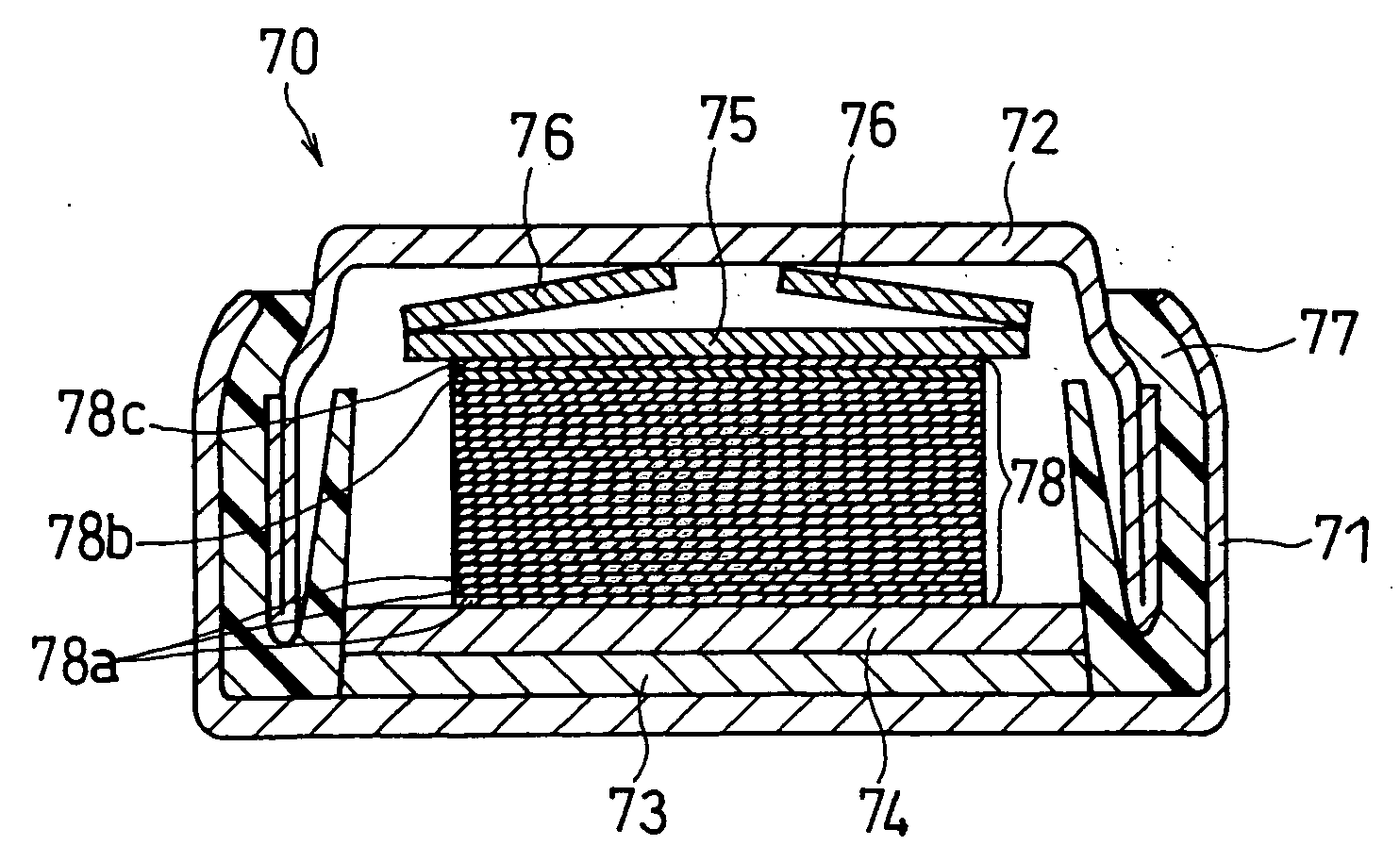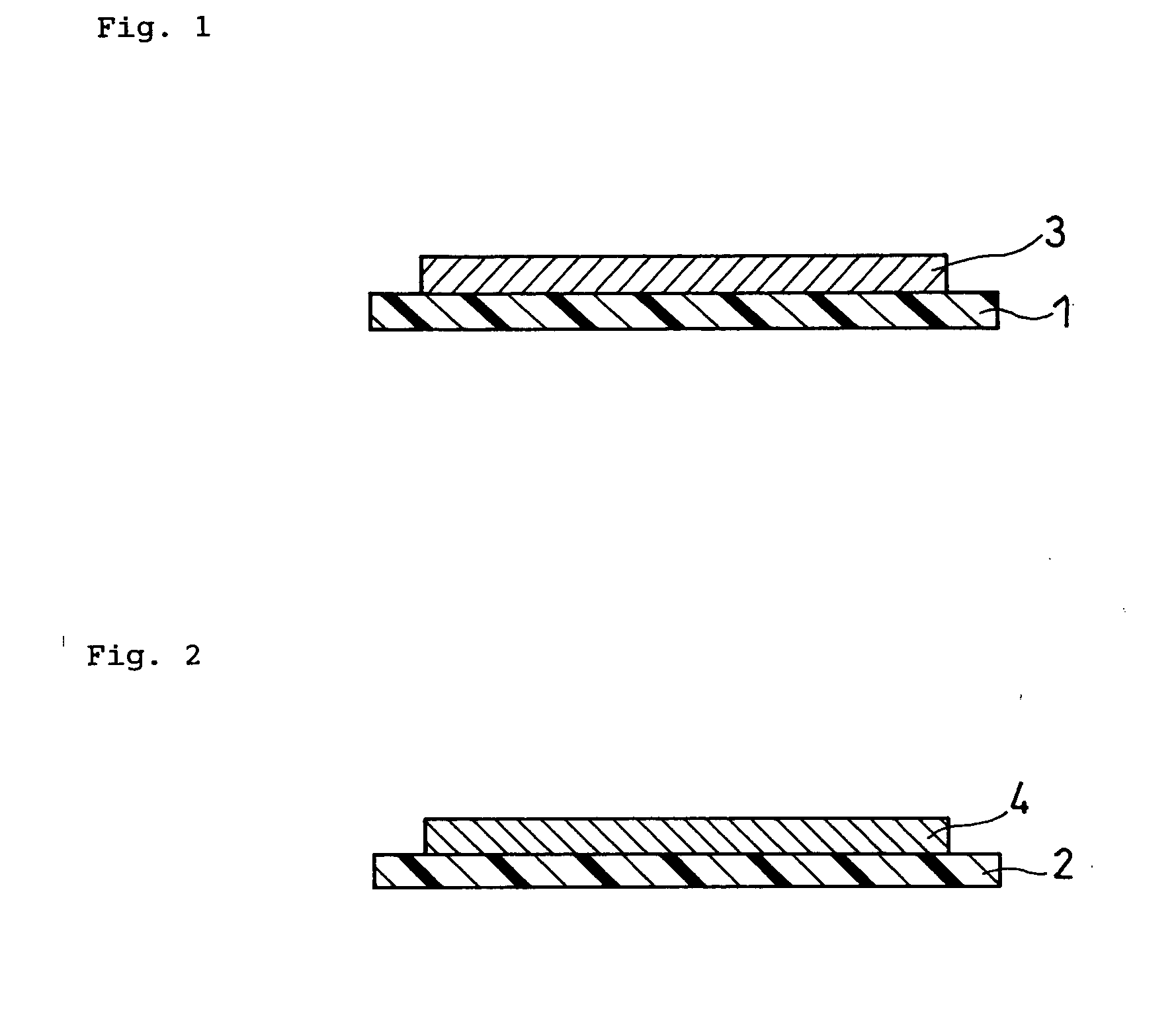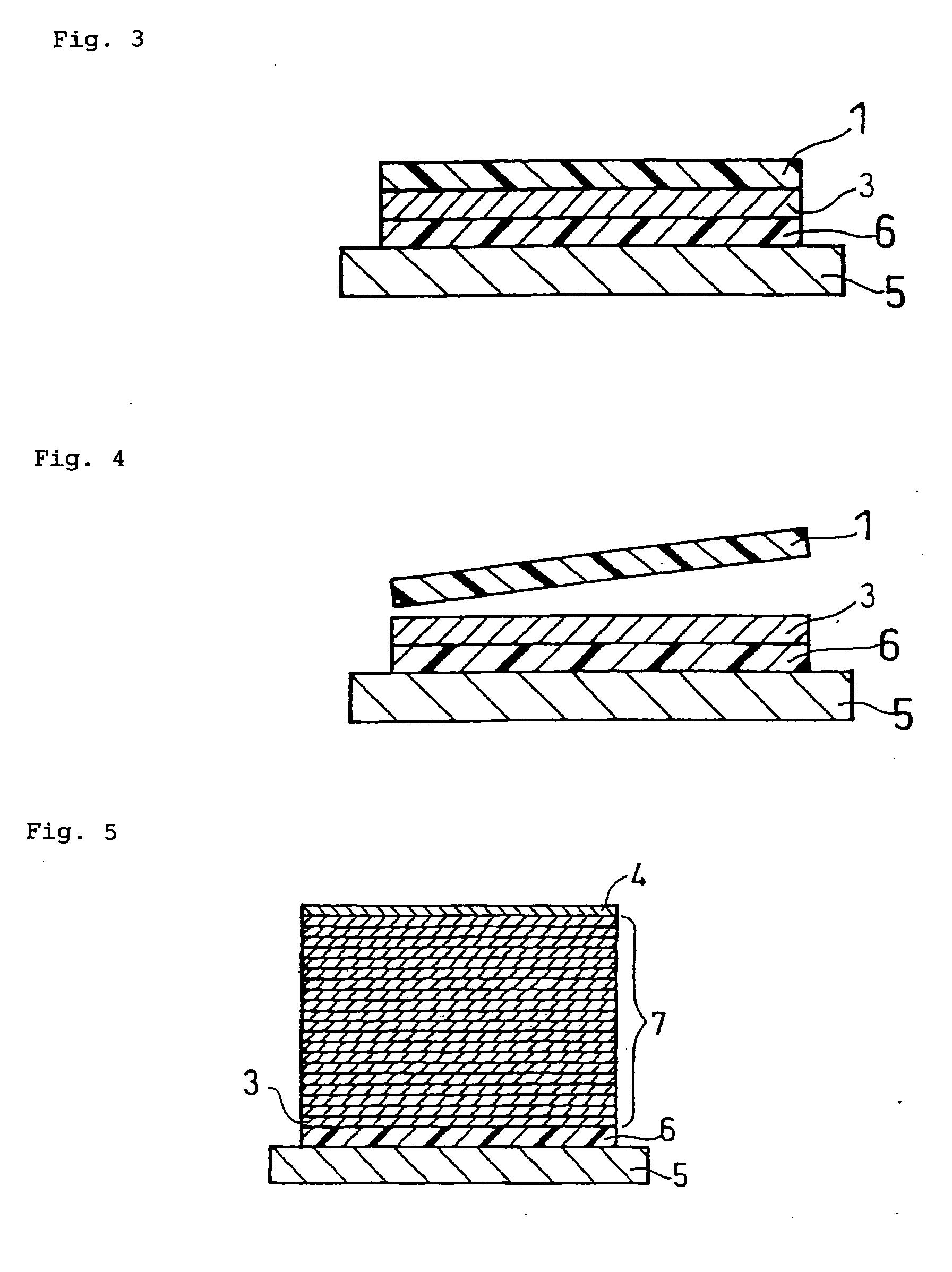Method for producing solid state battery
a solid-state battery and production method technology, applied in the manufacture of secondary cells, electrode manufacturing processes, final product manufacturing, etc., can solve the problems of inability to form terminal electrodes by any of the above methods, low output density, and leakage of electrolyte,
- Summary
- Abstract
- Description
- Claims
- Application Information
AI Technical Summary
Benefits of technology
Problems solved by technology
Method used
Image
Examples
example 1
[0085]The present invention will be described below with reference to examples. It should be understood, however, that the scope of the present invention is not limited thereto.
[0086]A battery was produced in the following procedure.
(1) First Step
[0087]LiCoPO4 having an average particle size of 1 μm was used as a positive electrode active material powder. The active material powder in an amount of 100 parts by weight was mixed with 15 parts by weight of polyvinylbutyral resin serving as a binder (S-Lec BM-S available from Sekisui Chemical Co., Ltd.), 7 parts by weight of dibutyl phthalate serving as a plasticizer and 130 parts by weight of n-butyl acetate serving as a solvent (available from Kanto Chemical Co. Inc.). The mixture was then mixed using zirconia balls in a ball mill for 24 hours to obtain an active material slurry.
[0088]Li1.3Al0.3Ti1.7(PO4)3 having an average particle size of 1 μm was used as a solid electrolyte powder. The solid electrolyte powder in an amount of 100 p...
example 2
[0107]A battery was produced in the same manner as in EXAMPLE 1 except that the heating temperature in the fourth step was changed to 200° C.
example 3
[0108]A battery was produced in the same manner as in EXAMPLE 1 except that the heating temperature in the fourth step was changed to 400° C.
PUM
| Property | Measurement | Unit |
|---|---|---|
| Temperature | aaaaa | aaaaa |
| Temperature | aaaaa | aaaaa |
| Temperature | aaaaa | aaaaa |
Abstract
Description
Claims
Application Information
 Login to View More
Login to View More - R&D
- Intellectual Property
- Life Sciences
- Materials
- Tech Scout
- Unparalleled Data Quality
- Higher Quality Content
- 60% Fewer Hallucinations
Browse by: Latest US Patents, China's latest patents, Technical Efficacy Thesaurus, Application Domain, Technology Topic, Popular Technical Reports.
© 2025 PatSnap. All rights reserved.Legal|Privacy policy|Modern Slavery Act Transparency Statement|Sitemap|About US| Contact US: help@patsnap.com



